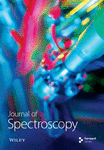Near infrared spectroscopy: A diagnostic tool to evaluate effects of radiotherapy in the mandible?
Abstract
Purpose. This study tests the hypothesis that near infrared spectroscopy can be used to detect changes in haemoglobin oxygenation status in the mandible, and therefore can be used to monitor the deleterious effects of radiotherapy and the possible reversion of these effects with therapeutic ultrasound. Methods. A probe was used to calculate the concentrations of deoxyhaemoglobin in the mandible bone of 30 volunteers with no known malignancies and 10 patients with malignancies in the head and neck region treated with radiotherapy. Results. Although the variability of the measurements was very high, when comparing the right side to the left side of the mandible, the measurements remained relatively similar. There was a great variability between the data for each patient, there was no correlation with age. Conclusions. The near infrared spectroscopy validation for the measurement of deoxyhaemoglobin concentrations in the mandible showed that the variability of the measurements was very high, therefore it is not appropriate to be used diagnostically for the evaluation of radiotherapy effects on the mandibular blood flow and metabolic status.




